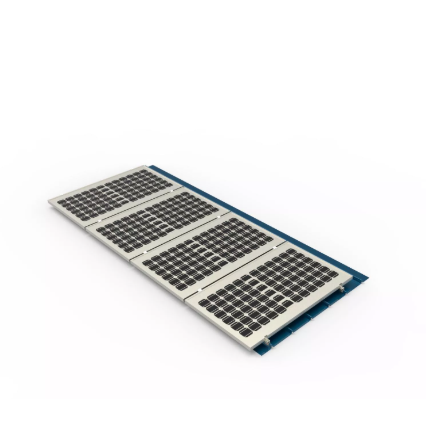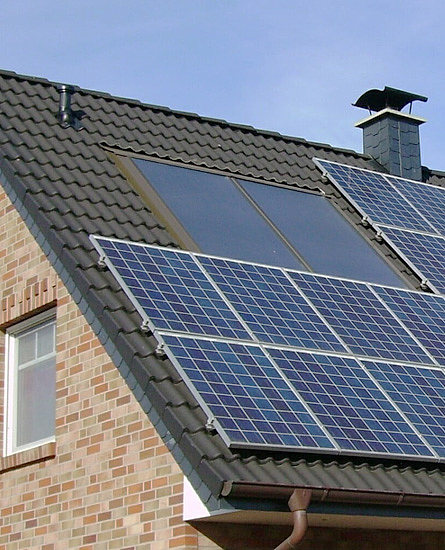


Views: 0 Author: Site Editor Publish Time: 2025-07-23 Origin: Site








Are you curious about what makes up a solar panel? It's easy to think that they’re just glass and some wiring, but there's a lot more involved in creating the devices that help us harness the sun's energy. Solar panels are an essential part of renewable energy solutions, but have you ever wondered about the materials used to make them? Understanding the components and materials behind these powerful tools can help you make more informed decisions when it comes to choosing the right solar products for your business.
In this post, we’ll discuss what solar panels are made of and how they are manufactured. You will learn about the essential materials that power solar cells and the innovative techniques that allow us to convert sunlight into energy. Let’s explore the process and materials involved in making these eco-friendly energy sources!
When it comes to solar panels, the materials used are crucial for their efficiency and longevity. These materials are carefully selected and engineered to capture solar energy and convert it into usable power. Here are the key materials that make up solar panels:
Silicon is the most important material in solar panels and makes up about 90% of the components. It is the key material that allows solar cells to convert sunlight into electricity through the photovoltaic effect. Solar panels use two types of silicon: monocrystalline and polycrystalline.
Monocrystalline Silicon: This is made from a single crystal of silicon. Monocrystalline solar panels tend to be more efficient, as they have a higher level of purity.
Polycrystalline Silicon: Unlike monocrystalline silicon, polycrystalline silicon is made from multiple silicon crystals. These panels are less efficient but are often cheaper to produce, making them a cost-effective alternative.
The outer layer of a solar panel is made from glass, which serves to protect the silicon cells from environmental factors such as dust, debris, and weather. The glass must be durable yet transparent enough to allow sunlight to pass through and reach the solar cells. The glass used in solar panels is typically about 6 to 7 millimeters thick, offering a balance of strength and transparency.
Aluminum is used for the frame that holds the solar panel together. It is lightweight, corrosion-resistant, and strong enough to protect the solar cells inside. The aluminum frame helps with the mounting of the solar panel on rooftops or other structures, ensuring that the panel remains secure and in the optimal position for maximum sunlight exposure.
Copper is used for the electrical wiring inside the solar panel. It connects the individual solar cells together and allows the electricity generated by the solar cells to flow through the system. Copper is an excellent conductor of electricity, which ensures that the energy produced by the solar cells is efficiently transferred and used.
Silver is another key component in solar panels. It is used to make the conductive paste that helps connect the silicon cells. Silver is highly conductive, meaning that it plays a crucial role in ensuring the electricity generated by the solar cells is transferred efficiently. Although silver makes up a small part of the solar panel, it can account for about 10% of the overall cost of the panel.
In addition to the main components, several other materials play important roles in solar panel manufacturing:
Plastic (Backsheet): A durable plastic backsheet is used to cover the back of the solar panel. This material is essential for providing insulation and protecting the solar cells from damage.
Ethylene Vinyl Acetate (EVA): EVA is a type of plastic used as an encapsulant material. It is used to bond the silicon cells to the glass and provide extra protection against moisture and heat.

Creating a solar panel is a complex process that requires precision and attention to detail. Each step is crucial for ensuring the panel’s efficiency and durability. Below, we break down the process of solar panel manufacturing:
The first step in creating a solar panel is extracting silicon from quartz or sand. Silicon is naturally abundant, making it an ideal material for solar cells. However, to be used in solar panels, silicon must undergo a purification process. This process involves heating the silicon dioxide (sand) in a furnace with carbon to extract pure silicon.
Once the silicon is purified, it is melted down and formed into a large, solid block called a silicon ingot. These ingots are then sliced into thin wafers, which will become the individual solar cells. The wafers are coated with an anti-reflective layer to ensure they can absorb as much sunlight as possible.
After the wafers are created, they are treated to create two types of layers: a positive (p-type) layer and a negative (n-type) layer. This is typically done by adding boron and phosphorus to the silicon. The p-type layer is infused with boron to create a positive charge, while the n-type layer is infused with phosphorus to create a negative charge.
When light hits the silicon cell, it knocks electrons loose, creating an electric current. The layers of silicon and the electric field that forms between them are what allow the solar panel to convert sunlight into electricity.
Once the individual solar cells are manufactured, they are soldered together to form a larger panel. A typical solar panel will contain 60 or 72 solar cells, depending on the design. The cells are arranged in a matrix and connected with busbars, which are metal strips that allow the electricity to flow through the cells and out of the panel.
The connected solar cells are placed between layers of protective materials, including a sheet of glass on the front and a backsheet at the back. The cells are then encapsulated with ethylene vinyl acetate (EVA) to protect them from moisture and heat. The entire assembly is then placed into an aluminum frame, which holds the panel together and ensures it is mounted securely.
A junction box is installed at the back of the solar panel. This box contains the electrical connections and serves to protect the wiring from external elements. The junction box also prevents reverse current, which can occur if the solar panel is not generating enough electricity, ensuring that the electricity flows in the correct direction.
Before a solar panel is shipped out, it undergoes rigorous quality testing. The panel is subjected to simulated sunlight to ensure that it meets the efficiency standards required. The testing ensures that the panel performs as expected and will generate reliable power for years to come.

Solar panels are a key player in the renewable energy industry. With the growing demand for clean, sustainable energy, solar panels are becoming more efficient and affordable. The materials used to make these panels, including silicon, glass, aluminum, and copper, play a critical role in ensuring their efficiency and durability.
As technology advances, the production of solar panels will continue to improve. Manufacturers are constantly researching new materials and techniques to enhance the performance of solar panels and reduce their environmental impact.
In recent years, there have been several exciting innovations in solar technology. Some of these include:
Bifacial Solar Panels: These panels capture sunlight on both the front and the back of the panel, increasing energy output.
Perovskite Solar Cells: A new type of solar cell that uses a special crystal structure, perovskite solar cells offer the potential for cheaper and more efficient solar panels.
Thin-Film Solar Panels: These panels use a thin layer of photovoltaic material and are more flexible and lightweight than traditional silicon panels.
Understanding what solar panels are made of and how they are manufactured is essential for anyone considering solar energy solutions. The materials used, such as silicon, glass, aluminum, and copper, are crucial to the efficiency and longevity of solar panels. With continued advancements in technology, solar energy is set to play a major role in powering our homes and businesses in a sustainable and environmentally friendly way.
When looking for high-quality solar panels for your business, Haina Solar offers innovative solutions with a focus on performance and durability. Explore Haina Solar’s offerings today to find the best solar panels for your needs.
A: Solar panels are primarily made of silicon, glass, aluminum, copper, and silver. Silicon is the most important material, as it converts sunlight into electricity.
A: Silicon is the semiconductor material used in solar cells. It helps convert sunlight into electricity by utilizing the photovoltaic effect.
A: Solar panels are made by extracting and purifying silicon, creating silicon wafers, manufacturing solar cells, and assembling the cells into panels, which are then encapsulated in protective layers.
A: The main types of solar panels are monocrystalline, polycrystalline, and thin-film panels. Monocrystalline panels are the most efficient, while polycrystalline panels are more affordable.
A: Aluminum is used for the frame of the solar panel because it is lightweight, strong, and resistant to corrosion, ensuring the panel remains secure and durable.